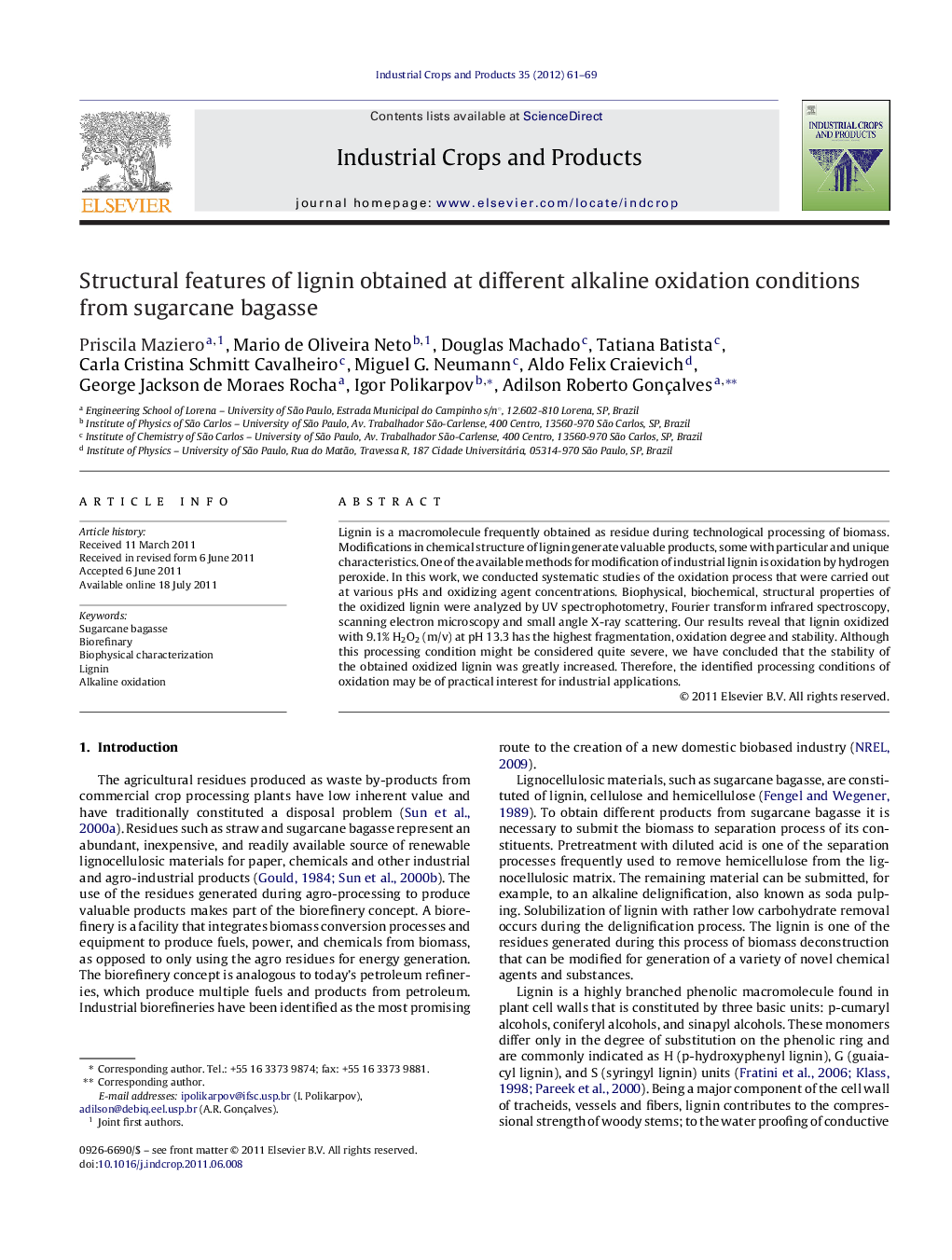| Article ID | Journal | Published Year | Pages | File Type |
|---|---|---|---|---|
| 4514606 | Industrial Crops and Products | 2012 | 9 Pages |
Lignin is a macromolecule frequently obtained as residue during technological processing of biomass. Modifications in chemical structure of lignin generate valuable products, some with particular and unique characteristics. One of the available methods for modification of industrial lignin is oxidation by hydrogen peroxide. In this work, we conducted systematic studies of the oxidation process that were carried out at various pHs and oxidizing agent concentrations. Biophysical, biochemical, structural properties of the oxidized lignin were analyzed by UV spectrophotometry, Fourier transform infrared spectroscopy, scanning electron microscopy and small angle X-ray scattering. Our results reveal that lignin oxidized with 9.1% H2O2 (m/v) at pH 13.3 has the highest fragmentation, oxidation degree and stability. Although this processing condition might be considered quite severe, we have concluded that the stability of the obtained oxidized lignin was greatly increased. Therefore, the identified processing conditions of oxidation may be of practical interest for industrial applications.
► We performed studies with oxidation of lignin in different conditions. ► Analysis revealed difference in stability and structural features of oxidized lignins. ► Lowest concentration of H2O2 at higher pH enables greater fragmentation and stability.
